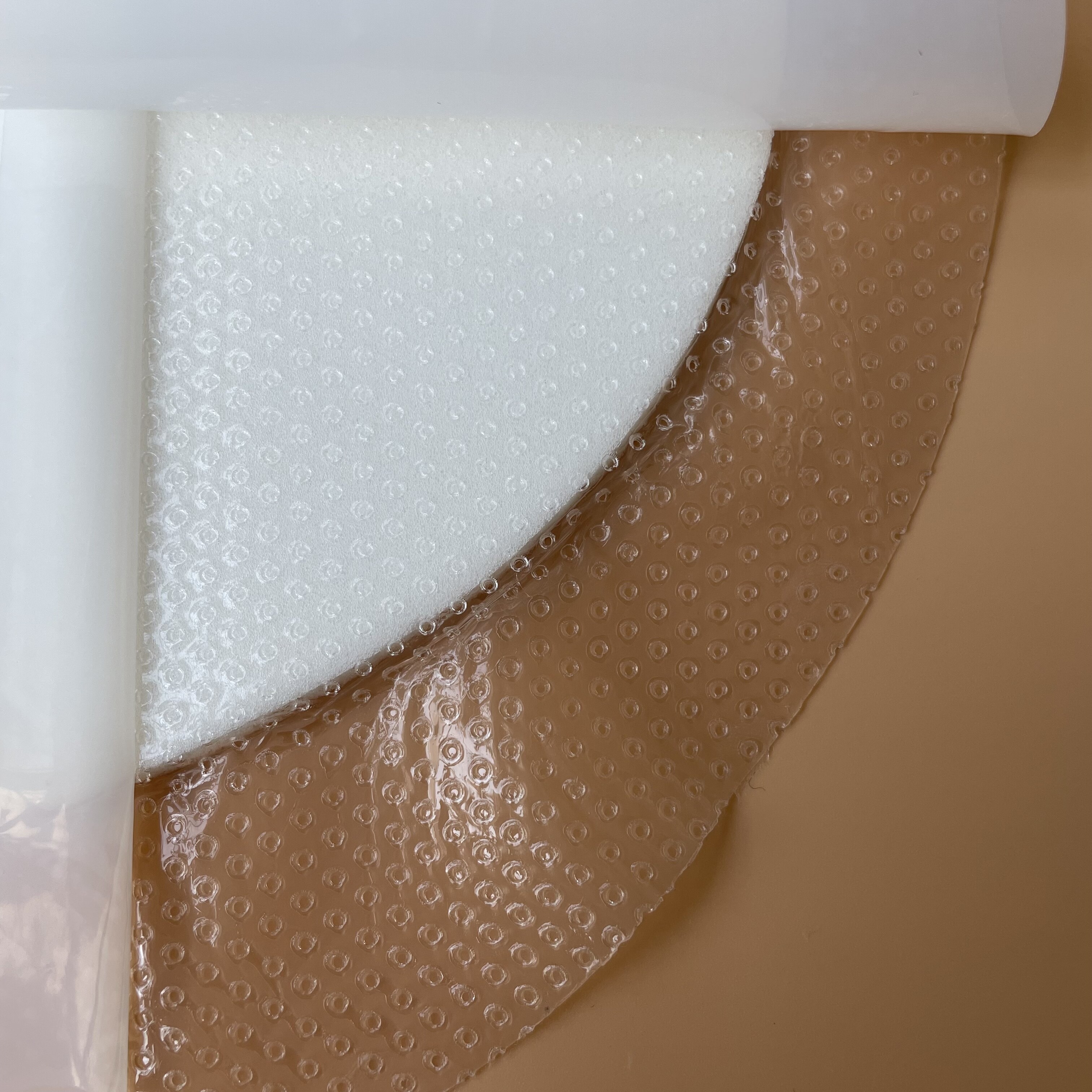Email cannot be empty
Password cannot be empty
Email format error
Email cannot be empty
Email already exists
6-20 characters(letters plus numbers only)
The password is inconsistent
Email format error
Email cannot be empty
Email does not exist
6-20 characters(letters plus numbers only)
The password is inconsistent


A Complete Guide to Wound Care: The Magic of Foam Dressings
Wound care has evolved significantly over the past few decades, thanks to advancements in medical research and technology. Gone are the days of simply covering wounds with a bandage and hoping for the best. Today, we have a variety of specialized products to help wounds heal faster and more effectively. One such product, which has revolutionized wound care, is the foam dressing. In this blog, we'll dive deep into the world of wound care foam dressings—what they are, how they work, and why they’re a game-changer in helping wounds heal.
What is a Wound Care Foam Dressing?
Before we get into the benefits and uses of foam dressings, let's break down what they are. Foam dressings are soft, highly absorbent, and usually made of polyurethane, which helps to cushion and protect wounds while simultaneously allowing them to heal. They are designed specifically to handle different types of wounds, particularly those that produce a lot of fluids (exudates).
The material of foam dressings is porous, enabling it to absorb excess wound fluid, keeping the area moist but not too wet—a balance that is critical for proper wound healing. Some foam dressings are also coated with a waterproof or bacteria-resistant layer to offer additional protection.
The Science of Wound Healing
To understand why foam dressings are so effective, it’s essential to first understand the basics of wound healing. When you get injured, your body goes through several stages to repair the damaged tissue. The main stages of wound healing include:
- Hemostasis: This is the initial stage where the body tries to stop the bleeding by forming blood clots.
- Inflammation: In this stage, the wound becomes red and swollen as white blood cells fight off any bacteria or infection.
- Proliferation: New tissue starts forming, and the wound begins to close.
- Maturation: The newly formed tissue strengthens, and the wound continues to heal until it’s fully closed.
During this entire process, maintaining the right amount of moisture in the wound area is crucial. If a wound is too dry, it won’t heal as effectively; if it's too wet, it could become infected. This is where foam dressings come into play.
Why Moisture Matters
One of the key principles of modern wound care is maintaining a moist healing environment. But why does moisture matter so much? Studies have shown that a moist wound environment helps to:
- Promote faster healing: Cells can grow and divide more quickly in a moist environment.
- Reduce pain: A moist wound is less likely to dry out, preventing painful scabs from forming.
- Minimize scarring: Moist environments allow for better cell movement, which reduces the risk of scar tissue forming.
- Lower the risk of infection: Proper moisture balance creates an optimal environment for the body's immune cells to fight off bacteria.
But managing moisture can be tricky. If a wound is too moist, bacteria can grow, which may lead to infections. Foam dressings excel in this delicate balancing act by absorbing excess fluids while keeping the wound sufficiently moist for healing.
The Benefits of Foam Dressings
Let’s dive into the specific benefits of using foam dressings for wound care:
1. Highly Absorbent
Foam dressings are fantastic at absorbing wound fluids. Whether you have a deep wound or one that exudes a lot of liquid, foam dressings can handle it. This reduces the frequency of dressing changes, making the healing process more convenient for both patients and caregivers.
2. Promotes Moist Wound Healing
As we discussed earlier, moisture is critical for wound healing. Foam dressings help to maintain the ideal level of moisture around the wound. This helps cells regenerate faster and more effectively.
3. Comfort and Cushioning
Because foam dressings are soft and cushiony, they provide a level of comfort and protection that traditional dressings lack. The foam helps to protect the wound from pressure and impact, which is especially helpful for people with chronic wounds or those in sensitive areas.
4. Non-Adhesive Options
Some foam dressings come in non-adhesive varieties, which means they don’t stick to the wound. This is particularly useful for wounds that are sensitive or painful, as it reduces discomfort during dressing changes.
5. Barrier Against Infection
Many foam dressings have an outer layer that is waterproof and bacteria-resistant. This provides an extra layer of protection, preventing external contaminants from entering the wound site while still allowing it to "breathe."
6. Versatility
Foam dressings can be used for a wide variety of wounds, from surgical wounds to pressure ulcers, diabetic ulcers, and traumatic injuries. They come in different shapes, sizes, and thicknesses to cater to different types of wounds.
7. Long-Wear Time
Due to their high absorbency and breathability, foam dressings can often be left in place for several days without needing to be changed. This not only saves time and resources but also minimizes disturbance to the wound, promoting more consistent healing.
How to Use Wound Care Foam Dressings
If you're new to wound care or foam dressings, the process of applying them is relatively straightforward:
Clean the Wound: Before applying any dressing, make sure the wound is clean. Use a saline solution or wound-cleaning product to gently cleanse the area.
Dry the Surrounding Skin: The area around the wound should be dry to ensure that the dressing adheres properly.
Apply the Foam Dressing: Place the foam dressing over the wound. If you’re using an adhesive version, it should stick securely to the skin. If not, secure the dressing with medical tape or a bandage.
Monitor the Dressing: Foam dressings are designed to be highly absorbent, but it’s still important to keep an eye on the wound and the dressing. If the dressing becomes soaked or starts to leak, it’s time to change it.
Change as Needed: Depending on the severity of the wound and the amount of fluid it produces, foam dressings can be left on for several days. However, if the wound shows signs of infection (redness, increased pain, warmth, or foul-smelling drainage), consult a healthcare provider immediately.
Types of Wounds Suitable for Foam Dressings
Not all wounds are the same, and different wounds require different treatments. Here are some types of wounds that can benefit from foam dressings:
- Pressure Ulcers: These occur when there is prolonged pressure on the skin, especially in bedridden individuals.
- Surgical Wounds: After surgery, foam dressings help absorb any exudate and cushion the wound area to prevent further trauma.
- Diabetic Ulcers: People with diabetes often suffer from slow-healing ulcers, particularly on their feet. Foam dressings can help manage these chronic wounds.
- Burns: Foam dressings can provide relief for minor burns by keeping the area moist and protected.
- Traumatic Injuries: From scrapes to deeper lacerations, foam dressings can handle a variety of injuries that produce exudate.
Conclusion
Foam dressings are an invaluable tool in modern wound care. They are versatile, easy to use, and provide the perfect environment for wounds to heal effectively. Whether you're dealing with a chronic wound like a diabetic ulcer or a more acute injury, foam dressings offer excellent protection and help maintain the ideal moisture balance for faster healing.
The next time you or a loved one experiences a wound that needs care, consider trying a wound care foam dressing. Not only will it make the healing process more comfortable, but it will also provide optimal conditions for a quicker recovery, helping you get back to your daily activities sooner.

